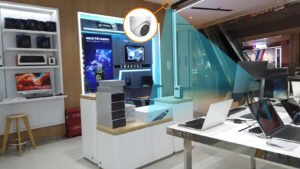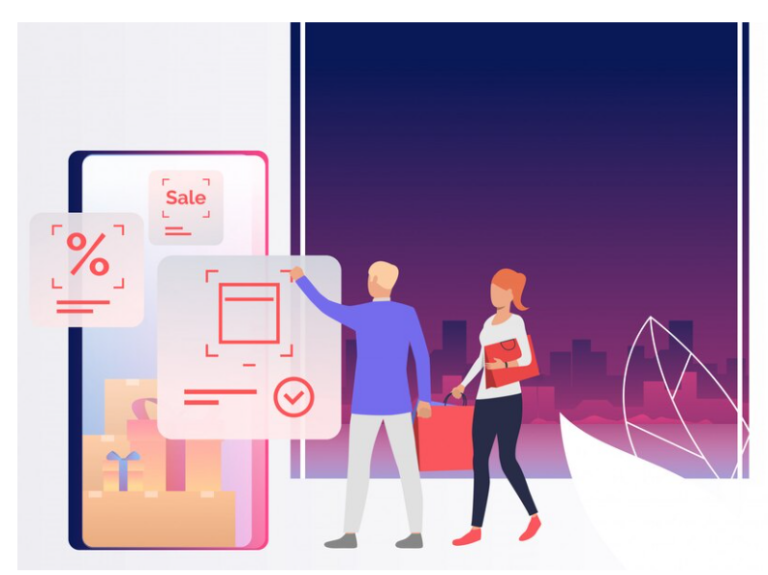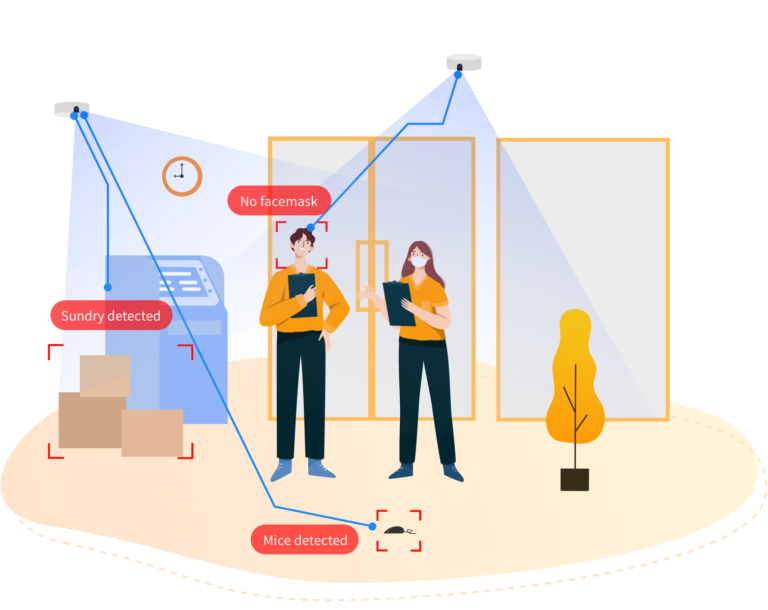Understanding People Counting and KPIs in Consumer Electronics Retail
Consumer electronics stores are vibrant and ever-changing spaces where understanding customer behavior is paramount to success. Have you ever noticed that many electronics stores in the shopping mall have already installed people counters at the store entrance?
In this blog post, we’ll unravel the significance of people counting and explore how it can revolutionize the way consumer electronics retailers analyze product engagement, set employee targets, and measure store KPIs.
Decoding “Store Footfall vs.Conversion Rate”:
- People counting systems in retail stores measure the number of visitors entering the store and leaving without making a purchase.
- When integrate the POS system to the people counting system, stores can get data on conversion rates, which represent the proportion of visitors to a store that make a purchase.
- By understanding the conversion rate, as well as its relationship with store traffic data, retailers can make informed decisions about store layout, employee scheduling, and promotions to improve sales.
Analyzing Product Engagement Level:
- Understanding how customers engage with products is crucial for optimizing product placement within the store.
- By analyzing in-store heatmaps generated from people counting systems, the electronic store can identify high-traffic areas and strategically position popular products and promotions to maximize visibility and customer interaction.
Setting Targets for Employees & Measure Store KPIs :
- In the context of retail, Key Performance Indicators (KPIs) serve as specific benchmarks that retailers aim for in their stores. These KPIs encompass metrics such as conversion rate, foot traffic, and customer numbers.
- Leveraging data from people counting systems, consumer electronics retailers can establish precise targets for store performance and employee service levels. For example, the data can be used to identify winners and laggards among stores, allocate resources appropriately, and ensure adequate staffing levels.
- This practice holds particular significance in the realm of electronics stores, where high-touch service matters a lot.
As explained above, the implementation of people counting systems is beneficial for electronics stores. The data helps stores gain deeper insights into customer behavior, optimize the retail environment, and stay ahead of the curve and continue to meet the evolving needs and expectations of their customers.
Use Case: Dell
OVOPARK had a successful project launch for stores in Dell China. OP’s people counting systems offer valuable insights by providing traffic counts and in-store heatmaps, empowering Dell Store to gain a deeper understanding of how customers interact with products, thereby elevating the overall shopping experience for its customers.

In addition to the people counting system, Dell Store has implemented OP’s cutting-edge store inspection system, featuring a dome camera installed in the center of the store ceiling. This advanced camera allows for comprehensive store inspections, as it supports timely and automated snapshots of the store, enabling upper-level store managers to gain a panoramic view of the store’s performance.

About OVOPARK OVOPARK (Suzhou) Technology Co., Ltd (OP Retail) headquartered in Suzhou, China, is a national high-tech enterprise. Since our establishment in 2016, we have been committed to revolutionizing technologies for diverse retail store scenarios: people counting, visitor analysis, customer behavior insights, store operation analysis, and more. OVOPARK’s solutions are meticulously designed with a focus on usability, top-tier security, and adaptable scalability. For further details, please visit our website or reach out to us with any inquiries.







